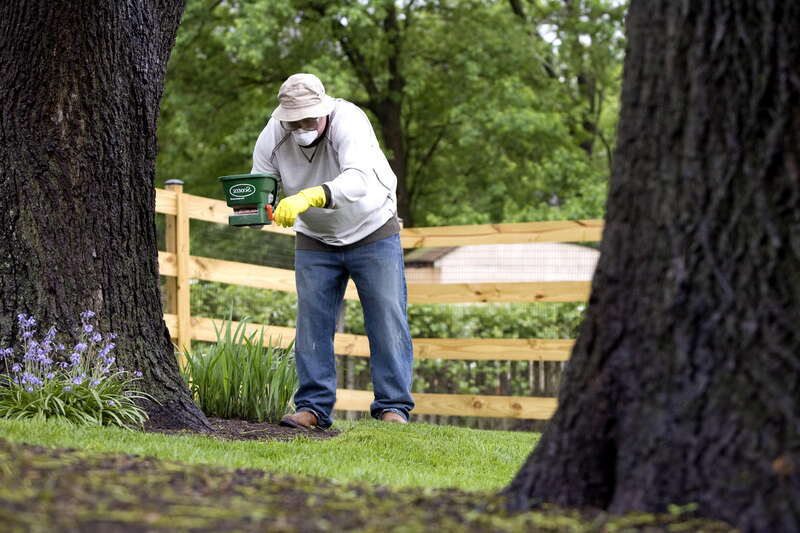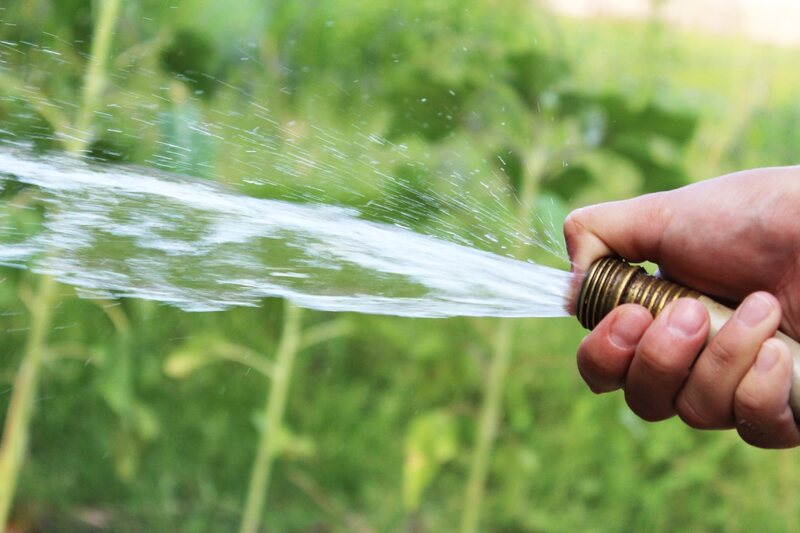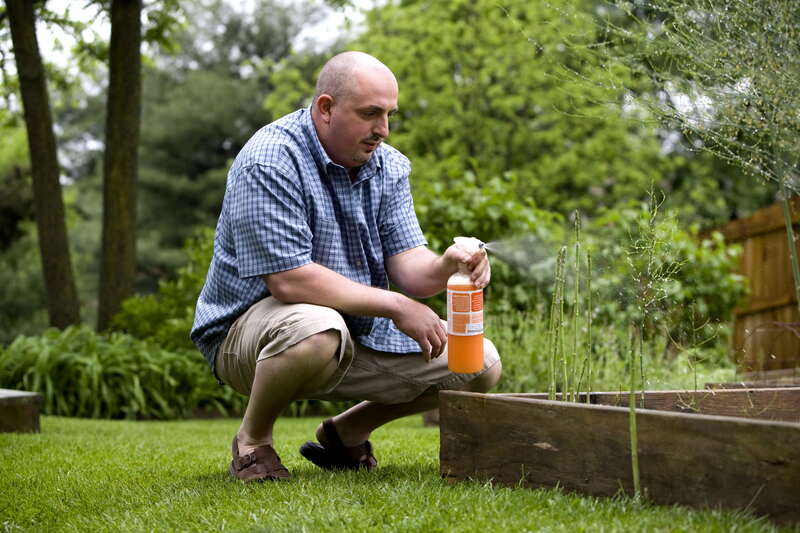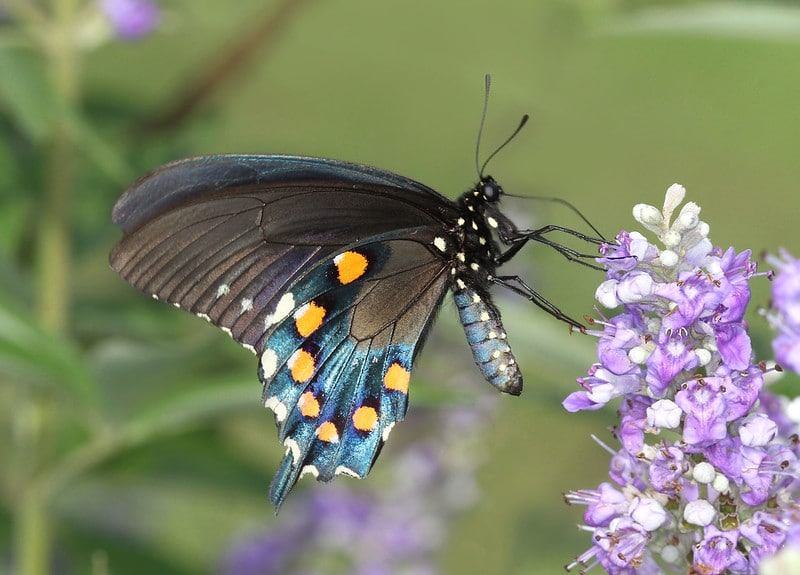9 Florida-Friendly Landscaping Ideas
BY MELANIE JOSEPH | MAY 8TH, 2023 | FLORIDA, LAWN CAREFlorida is blessed with sunshine, gorgeous beaches, warm temperatures, stunning natural landscapes, and lush vegetation year-round. But with the Sunshine State’s unique weather conditions and soil types, creating and maintaining a beautiful and resilient landscape can be a challenge.
In addition, Florida is prone to hurricanes and tropical storms, which can cause severe damage to homes and gardens. With this in mind, these 9 Florida-friendly landscaping ideas can help you achieve the perfect garden for your home.
In this article, we’ll cover:
- Right Plant, Right Place
- Fertilize To Support Healthy Growth
- Water Your Lawn Efficiently
- Mulching is Essential for Your Garden
- Protect the Waterfront
- Reduce Stormwater Runoff
- Manage Yard Pests Before They Overrun Your Yard
- Recycle Yard Waste
- Attract Wildlife
What is Florida-Friendly Landscaping?
To have a beautiful and healthy garden, you need a sustainable approach like the Florida-Friendly Landscaping or FFL program that’s suitable for your Florida home. The FFL program is a statewide initiative that encourages sustainable landscaping practices ideal for the state’s unique climate and soil conditions.
This program was established in 1993 by the University of Florida’s Institute of Food and Agricultural Sciences (UF/IFAS extension) and the Florida Department of Environmental Protection. It was their response to concerns about water quality and conservation in the state.
With a range of educational resources and training programs for homeowners, landscapers, and other professionals, the program has numerous goals, including:
- Promote sustainable landscaping practices that reduce water and fertilizer use
- Promote biodiversity and ecological health
- Prevent erosion and runoff
These resources include workshops, online training, and educational materials such as books, brochures, and videos.
9 Florida-Friendly Landscaping Ideas
With numerous recognition and awards for its contributions to water quality and conservation efforts, the FFL program has been successful in promoting sustainable landscaping practices throughout the state.
One of the key features of the Florida-Friendly Landscaping program is the use of nine key principles that form the basis of sustainable landscaping practices in the state. These FFL principles include using native plants, mulching, minimizing fertilizer and pesticide use, and promoting wildlife habitat conservation and management.
1. Right Plant, Right Place
Creating a sustainable and easy-to-maintain home landscape design is achievable by ensuring that each plant is positioned in the most suitable location. But first, you’ll need to choose Florida-friendly plants that are suited to your property’s soil type, lighting conditions, water availability, and climate.
Choose Native Plants
Since native plants require little to no additional water, fertilization, or pesticides once established, it translates to time and cost savings. But remember to stay away from invasive plants like Chinese tallow and Australian pine in your plant selection. Instead, opt for salt-tolerant plants like seagrape and Southern wax myrtle.
Plan Your Plant Placements
Before planting, check if it’s safe to dig in that area. Otherwise, you may damage your utility lines, which will cause tremendous problems for you. Also, avoid planting trees too close to your home and power lines to prevent issues down the line.
The benefits of following the “Right Plant, Right Place” approach include:
- Once plants are established, they’ll need only a small amount of supplemental watering.
- Opting for pest-resistant plant varieties can help reduce the need for pesticide applications.
- Using plants compatible with the soil’s pH and type means that fewer soil amendments and nutrient additives will be needed.
- Choosing the right plants and planting them in the right spot can help minimize the need for pruning.
- With the best choice of native plants, your landscape will always look good and add value to your property.
Estimated Cost: Several factors can influence the cost of professional tree planting. It’s typically higher for larger and more established trees, while smaller saplings tend to be more affordable. But you can expect to pay between $22 and $3,300.
2. Fertilize To Support Healthy Growth

Photo Credit: Pixnio
To promote healthy plant growth, you must ensure they receive the appropriate nutrients they need. Though plants naturally obtain nutrients from the soil, providing them with supplemental nutrients can help them grow much better. Fertilizers can:
- Boost the appearance of plants
- Correct any nutritional deficiencies
- Promote more flowers or fruits
However, you need to use the right fertilizers. Otherwise, using fertilizers not suitable for your plants can damage them and cause severe environmental consequences.
To determine the right type and amount of fertilizer you need for your lawn, a soil test done by your local extension office can help. By analyzing soil samples, it can reveal crucial information about the nutrient levels, pH, and organic matter content of the soil. For example, if a soil test reveals that the soil is deficient in nitrogen, a fertilizer with a higher nitrogen content may be recommended.
Also, fertilize at the right time to prevent nutrient runoff and leaching. The UF/IFAS Extension recommends fertilizing between February and March or September to October. Doing so can help ensure that your lawn receives adequate nutrients to thrive while protecting Florida’s waters from pollution.
Always follow fertilizer label directions carefully and adhere to any local fertilizer ordinances. Plus, ensure that your landscape professional is licensed and has undergone the GI-BMP (Green Industries Best Management Practices) training.
Estimated Cost: On average, the cost of fertilization for an average-sized lawn is around $380, with costs ranging from $88 to $544. The final cost depends on factors including the size of the lawn, the type of fertilizer used, and the lawn care company hired to perform the service.
3. Water Your Lawn Efficiently

Photo Credit: Pxhere
Implementing an effective irrigation system can have a significant impact on water conservation and reducing pollution. With a well-designed and calibrated irrigation system that uses less water, your plants will have the right amount of water necessary for optimal growth while you help conserve water resources.
Moreover, an efficient irrigation system can enhance the aesthetic appeal of the yard, which can bring a sense of satisfaction. Plus, it can help minimize nutrient leaching and runoff, resulting in a more sustainable environment. Also, adjust your watering schedule accordingly to conform with the local government’s ordinance on water restrictions.
When designing an irrigation system, remember to:
- Use rain shutoff devices that prevent watering during and after a rain or hurricane
- Tailor irrigation schedules to the specific needs of the plants
- Calibrate the irrigation system to maximize its efficiency
- Incorporate micro-irrigation in the landscape beds
- Regularly check for overspray and leaks
Another way of helping reduce the strain on municipal water systems is to use rain barrels for collecting and storing rainwater for irrigation. Doing so can help lower your water bills. Plus, collecting rainwater with rain barrels before it hits the ground can help prevent erosion and promote healthy soil.
Always remember that overwatering can be harmful to your lawn. So, only water your garden as needed while considering the best time to water in Florida.
Estimated Cost: On average, the installation cost for underground sprinkler systems is approximately $0.60 per square foot, with the total cost averaging around $3,150. This amount can fluctuate depending on various factors, such as the complexity of the system design, the size of the yard, and the type of sprinkler heads being installed.
4. Mulching is Essential for Your Garden
You might be surprised at what a layer of mulch can do for your landscape. It conserves moisture, protects plants, and reduces weed growth. Mulch is also an excellent choice for shady areas and hard-to-mow spots. It creates a neat and uniform appearance that is both visually pleasing and functional.
Using mulch provides many benefits for your landscape, including:
- Inhibits weed growth
- Moderates soil temperature
- Gives your landscape a more polished look
- Organic mulch can help enrich the soil and improve its structure
- Reduces water evaporation and helps with retaining soil moisture
Maximize the benefits of mulching by maintaining a 2- to 3-inch-deep layer on plant beds. Be careful not to pile mulch against the trunk of your trees, as this may cause rot. Instead, leave a 2-inch space around the trunk. Allowing fallen leaves to remain under your trees creates a self-mulching area that enriches the soil. When choosing mulch, consider sustainability.
There are two types of mulch – inorganic and organic. Inorganic mulch is made from synthetic materials like rubber or plastic. In contrast, organic mulch is made from natural materials like bark, leaves, and straw.
The pros and cons of inorganic mulch are:
Pros:
- Long-lasting and durable
- Does not require frequent replacement
- Does not attract pests or rodents
- Generally less expensive than organic mulch
- Good for high-traffic areas
Cons:
- Does not provide nutrients to the soil
- Can hinder drainage and water absorption in soil
- May increase soil temperature
- Does not support beneficial soil organisms
- It can be made from nonrenewable resources such as plastic or rubber
On the other hand, organic mulch has the following pros and cons:
Pros:
- As it decomposes, it provides nutrients to the soil
- Improves soil structure and drainage
- Helps retain moisture in the soil
- Supports beneficial soil organisms
- Can be made from sustainable, renewable resources
- Adds an aesthetic quality to landscaping
Cons:
- It can attract pests or rodents if not managed properly
- Requires more frequent replacement than inorganic mulch
- It may be more expensive than inorganic mulch
- Can harbor weed seeds if not properly composted
Since it provides many benefits to the soil, it’s better to use organic mulch for your Florida yard. While inorganic mulch has its advantages, it does not contribute to soil health in the same way as organic mulch.
Estimated Cost: The price of mulch varies depending on the type and quantity purchased. On average, a cubic yard of mulch costs around $17 to $68, or approximately $2 to $5.50 per bag. Prices also may differ based on the supplier, location, and quality of the mulch.
5. Protect the Waterfront
With its vast array of water bodies, Florida is home to around 7,800 lakes and over 10,000 miles of streams and rivers. In fact, it has the second-longest coastline in the country. Do your part in safeguarding these natural resources by maintaining a 10-foot low-maintenance zone along the water’s edge.
Avoid mowing, fertilizing, or using pesticides in these areas to protect native aquatic plants, such as maidencane and giant bullrush. Additionally, you should remove exotic species like purple loosestrife and water hyacinth because they have invasive growth habits.
Other protective measures you can do include:
- Use flood-tolerant plants along the shoreline to reduce contaminants in the water while creating a visually pleasing habitat for wildlife.
- Transform stormwater ponds and canals into thriving ecosystems by incorporating a variety of flowering and other plants.
- Install a backyard buffer with wind-resistant and native trees and plants.
- If you have a beachfront property, you should install a seawall for extra protection from erosion and flooding.
The benefits of protecting your waterfront include:
- Increased wildlife activity in shoreline areas
- Reduced need for mowing in the low-maintenance zone
- Enhanced water quality through the use of flood-tolerant plants
- Increased beauty of waterfront areas with various native plants, wildflowers, and trees
Estimated Cost: You will actually save money by letting nature maintain the 10-foot low-maintenance zone along the water’s edge. But if you need to transplant flood-tolerant trees and plants along the shoreline, the cost can range anywhere from $158 to $880. If you are installing a seawall, expect to pay around $113 to $770 per linear foot.
6. Reduce Stormwater Runoff
If you want to preserve water quality, it’s crucial to avoid stormwater runoff that can carry pollutants such as fertilizers, pesticides, and soil debris. This way, you can keep as much rainfall and irrigation water on your property as possible.
Examples of what you can do include:
- Creating shallow rain gardens or shaping the earth with swales and berms can help control runoff from heavy rainfall and allow water to soak into the ground.
- Maintaining permeable walkways, driveways, pavers, and patios also allows rainwater to penetrate the ground.
These stormwater control features not only add beauty to the landscape but also reduce pollution and protect the environment by filtering stormwater through plants and soil. The collected water can even be used for irrigation and, at the same time, prevent erosion and maintain a healthy landscape.
Estimated Cost: Hiring a professional crew to help you create a sustainable landscape that can reduce stormwater runoff may cost between $7 and $11 per foot.
7. Manage Yard Pests Before They Overrun Your Yard

Photo Credit: Pixnio
A gardening strategy called Integrated Pest Management (IPM) aims to control pests using minimal chemicals. This technique involves selecting pest-resistant plants and placing them in appropriate locations to prevent disease and insect outbreaks. If a problem arises, remove the affected parts of the plant or physically remove the insects by hand.
Avoid over-treating by spot-treating only and using selective, rather than broad-spectrum, insecticides. And remember to always follow the instructions on insecticide labels.
The benefits of managing your yard pests include:
- Reduces the use of chemical pesticides that can be harmful to your family and pets
- Helps eliminate the need for toxic products that harm the environment
- Protects the beneficial insects that help control pests
- Helps you save money on pesticides
Estimated Cost: The cost of IPM services can vary depending on the type of treatment required and the severity of the pest infestation. Generally, you may have to spend between $7 and $14 per month for each unit.
8. Recycle Yard Waste
One important aspect of maintaining a healthy landscape is managing yard waste generated by maintenance activities like raking, mowing, and pruning. Keeping these materials onsite can help conserve nutrients and reduce the energy required for transportation.
As organic matter decomposes, it releases nutrients back into the soil – which plants ultimately absorb. Composting yard waste is an environmentally sustainable method of producing organic fertilizer, which can help enrich the soil and improve plant growth.
Additionally, using uncomposted leaves and pine straw as mulch can reduce the need for purchasing mulch, further saving money and resources.
Estimated Cost: None – it can even help you save money.
9. Attract Wildlife

Photo Credit: John Flannery / Flickr / CC BY-ND 2.0
If you’re interested in attracting more wildlife to your yard, consider designing a landscape that provides food and habitat for various species:
- Choose plants that offer seeds, fruit, foliage, flowers, or berries that are appealing to wildlife.
- Add a source of water, like a bird bath or rain garden.
- Create vertical layering with plants to offer more cover and feeding options for wild critters.
- You can even build a bat house or plant host plants for butterflies to further attract Florida’s unique wildlife.
By reducing your use of insecticides, you’ll also help protect native animals and beneficial insects while promoting a healthy ecosystem in your yard. Enjoy the benefits of observing and supporting Florida’s diverse wildlife while enhancing your landscape.
Estimated Cost: A bird bath can come in many forms, from a simple $2 ceramic saucer placed on the ground to an extravagant marble one that can set you back $2,000 or more. If you opt for a rain garden, the cost can vary greatly, depending on its size and the number of plants used, ranging from $3 to $15 per square foot.
Benefits of Florida-Friendly Landscaping
By following the FFL principles, you can enjoy a beautiful and healthy landscape, as well as these benefits:
- Water conservation: The program helps homeowners conserve water resources by reducing the amount of water needed for irrigation and minimizing runoff.
- Reduced water pollution: By using fewer fertilizers and pesticides, the program reduces the amount of pollutants that enter waterways, which helps improve water quality.
- Cost savings: The program can help save money on water bills, fertilizer, and pesticide use.
- Increased property value: A well-maintained and sustainable Florida-friendly yard can increase your property’s value and make it more attractive to potential buyers.
- Habitat creation: By using FFL principles, you can create a habitat for butterflies, birds, and other wildlife.
- Improved aesthetics: Sustainable landscaping can be beautiful, providing year-round color and texture.
- Community building: Implementing Florida-friendly landscaping principles can bring together community members who share a common goal of promoting sustainable landscaping practices.
FAQ About Florida-Friendly Landscaping Ideas
The best Florida-friendly turfgrass for your lawn depends on several factors, such as your location, soil type, amount of shade and sun, and maintenance preferences. Some of the most commonly used warm-season grasses in the Sunshine State include St. Augustinegrass, bahiagrass, Zoysiagrass, and bermudagrass.
Each turfgrass has its own advantages and disadvantages, so you must do your research and consult with a local landscape expert to determine which one is best suited for your specific needs. Additionally, choosing a turfgrass that is drought-tolerant and pest-resistant can help reduce water usage and minimize the need for chemical treatments.
Yes, you can use groundcovers instead of turfgrass for your lawn. In fact, using groundcovers is often a more sustainable and Florida-friendly option because they require less water, fertilizer, and pesticides than traditional turfgrass lawns.
Some examples of groundcovers suitable for Florida’s climate include Asiatic jasmine, liriope, and mondo grass. Consider the amount of sunlight and foot traffic in the area, as well as the soil type and moisture level.
Additionally, some HOAs or municipalities may have restrictions on the use of groundcovers, so you must check local regulations and ordinances before making any changes to your lawn.
There are several hurricane-resistant trees that can be planted in Florida to help reduce damage from strong winds and storms. Some of the top hurricane-resistant trees include:
- Bald cypress: A tall, slender tree that can tolerate flooding and high winds in North and Central Florida.
- Crape myrtle: A small to medium-sized tree with flexible branches that can bend and sway in strong winds.
- Sabal palm: Ideal for South Florida gardens, this native palm is resistant to high winds and salt spray.
- Southern live oak: A large, sturdy tree with strong, wind-resistant branches and a deep root system.
- Southern magnolia: A slow-growing, broadleaf evergreen tree that can withstand high winds and salt spray.
Beautify Your Home With Florida-Friendly Landscaping
Incorporating Florida-friendly landscaping practices in your outdoor space can help you conserve natural resources while creating a beautiful landscape. Moreover, by minimizing stormwater runoff and reducing pollution, you also can contribute to the health of Florida’s waterways and native wildlife.
With these home landscape ideas, you can transform your garden into a functional and visually appealing environment. Whether you are a seasoned gardener in Miami, St. Augustine, Tampa, Orlando, Pensacola, Jacksonville, or another city in the Sunshine State, these strategies can help you create a landscape that is both practical and eco-friendly.
But if you don’t want to get your hands dirty, consider hiring a landscaping pro to help with your Florida-friendly landscape design.
Main Photo Credit: Wallpaper Flare